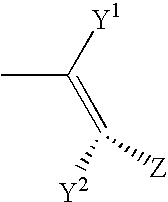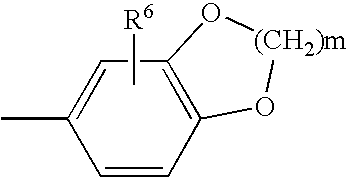Adenosine A2A receptor antagonists for treating restless legs syndrome or nocturnal myoclonus
a technology of adenosine a2a receptor and restless legs, which is applied in the direction of drug composition, extracellular fluid disorder, metabolic disorder, etc., can solve the problems of motor restlessness that is poorly diagnosed and treated, unrecognized or misdiagnosed, and the urge to move is irresistibl
- Summary
- Abstract
- Description
- Claims
- Application Information
AI Technical Summary
Benefits of technology
Problems solved by technology
Method used
Image
Examples
example 1
Tablets
[0135]Tablets having the following composition are prepared in a conventional manner.
[0136]Compound A (40 g) is mixed with 286.8 g of lactose and 60 g of potato starch, followed by addition of 120 g of a 10% aqueous solution of hydroxypropyl cellulose. The resultant mixture is kneaded, granulated, and then dried by a conventional method. The granules are refined to give granules used to make tablets. After mixing the granules with 1.2 g of magnesium stearate, the mixture is formed into tablets each containing 20 mg of the active ingredient by using a tablet maker (Model RT-15, Kikusui) having pestles of 8 mm diameter.
[0137]The prescription is shown in Table 2.
[0138]
TABLE 2Compound A20mgLactose143.4mgPotato Starch30mgHydroxypropyl Cellulose6mgMagnesium Stearate0.6mg200mg
example 2
Capsules
[0139]Capsules having the following composition are prepared in a conventional manner.
[0140]Compound A (200 g) is mixed with 995 g of Avicel and 5 g of magnesium stearate. The mixture is put in hard capsules No. 4 each having a capacity of 120 mg by using a capsule filler (Model LZ-64, Zanashi) to give capsules each containing 20 mg of the active ingredient.
[0141]The prescription is shown in Table 3.
[0142]
TABLE 3Compound A20mgAvicel99.5mgMagnesium Stearate0.5mg120mg
example 3
Injections
[0143]Injections having the following composition are prepared in a conventional manner.
[0144]Compound A (1 g) is dissolved in 100 g of purified soybean oil, followed by addition of 12 g of purified egg yolk lecithin and 25 g of glycerin for injection. The resultant mixture is made up to 1,000 ml with distilled water for injection, thoroughly mixed, and emulsified by a conventional method. The resultant dispersion is subjected to aseptic filtration by using 0.2 μm disposable membrane filters, and then aseptically put into glass vials in 2 ml portions to give injections containing 2 mg of the active ingredient per vial.
[0145]The prescription is shown in Table 4.
[0146]
TABLE 4Compound A2mgPurified Soybean Oil200mgPurified Egg Yolk Lecithin24mgGlycerine for Injection50mgDistilled Water for Injection1.72ml2.00ml
PUM
| Property | Measurement | Unit |
|---|---|---|
| diameter | aaaaa | aaaaa |
| movements | aaaaa | aaaaa |
| physical examination | aaaaa | aaaaa |
Abstract
Description
Claims
Application Information
 Login to View More
Login to View More - R&D
- Intellectual Property
- Life Sciences
- Materials
- Tech Scout
- Unparalleled Data Quality
- Higher Quality Content
- 60% Fewer Hallucinations
Browse by: Latest US Patents, China's latest patents, Technical Efficacy Thesaurus, Application Domain, Technology Topic, Popular Technical Reports.
© 2025 PatSnap. All rights reserved.Legal|Privacy policy|Modern Slavery Act Transparency Statement|Sitemap|About US| Contact US: help@patsnap.com



